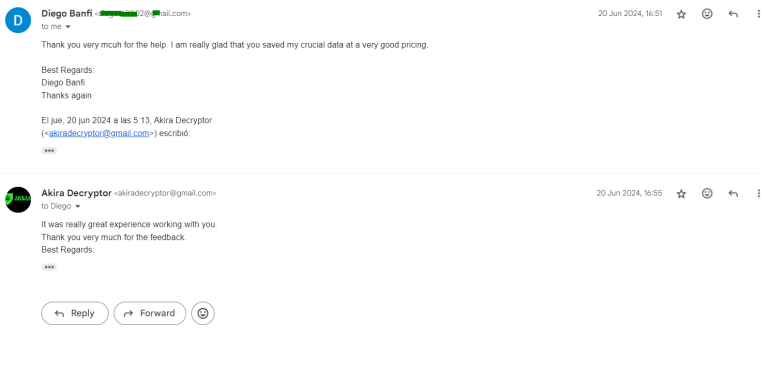Decrypting ESXi Servers from Akira Ransomware: A Comprehensive Guide Using the Akira Decryptor
In recent months, the rise of Akira ransomware has caused significant disruptions for many organizations, especially those utilizing VMware ESXi servers. This guide will walk you through the steps necessary to decrypt your ESXi server encrypted by Akira ransomware using the Akira Decryptor tool.
Understanding Akira Ransomware
Akira ransomware is a sophisticated and damaging type of malware that encrypts files on infected systems and demands a ransom payment in exchange for the decryption key. It targets ESXi servers, which are critical for running virtual machines and managing IT infrastructures. When an ESXi server is compromised, all data within the virtual environment can be rendered inaccessible.
Prerequisites Before Decryption
- Ensure Backups: Confirm that you have up-to-date backups of your data. While the decryptor tool can help recover encrypted files, having backups is essential in case of any issues during the decryption process.
- Isolate the Infected System: To prevent further spread of the ransomware, disconnect the infected ESXi server from the network. This isolation helps avoid additional encryption or data loss.
- Secure the Environment: Perform a thorough security scan on your network and other systems to ensure that the ransomware has not spread beyond the initial target.
Steps to Decrypt Your ESXi Server Using the Akira Decryptor
1. Obtain the Akira Decryptor Tool
We have developed very advanced tool for Akira ransomware. You can purchase the akira decryptor from our team by contacting us on WhatsApp or Email and then you can use the tool as shown in the video.
You may also like: Case Study: Decrypting 50 TB of Data from Akira Ransomware for a Major US Tech Company
2. Prepare the ESXi Server
- Boot into Safe Mode: Restart your ESXi server and enter safe mode. This can help minimize any potential interference from the ransomware during the decryption process.
- Backup Encrypted Data: Although this may seem redundant, create a backup of the encrypted data to prevent any accidental data loss or corruption during decryption.
3. Run the Akira Decryptor
- Install the Decryptor: Follow the installation instructions provided with the decryptor tool. This may involve running an installer or extracting files to a designated location on your server.
- Execute the Decryptor: Launch the Akira Decryptor tool. You will need to provide certain information, such as the encrypted files or directories, and possibly any ransom notes or identifiers related to the attack. You can follow the video guide for more information.
4. Monitor the Decryption Process
- Track Progress: Keep an eye on the decryptor’s progress to ensure that it’s working as expected. Depending on the size and number of files, this process may take some time.
- Verify File Integrity: After decryption, check the integrity of your files to ensure they have been restored correctly and are functioning as intended.
5. Post-Decryption Actions
- Update Security Measures: Implement robust security measures to prevent future attacks. This includes updating software, applying patches, and enhancing network security protocols.
- Restore from Backups: If any files remain inaccessible or if there are issues with the decrypted data, consider restoring from backups to ensure complete recovery.
- Conduct a Security Audit: Perform a comprehensive security audit to identify any vulnerabilities and strengthen your defenses against future threats.
Conclusion
Dealing with Akira ransomware can be a challenging and stressful experience. However, by following these steps and using the Akira Decryptor tool, you can effectively decrypt your ESXi server and recover your data. Always prioritize prevention and security to minimize the risk of ransomware attacks and ensure the resilience of your IT infrastructure.


